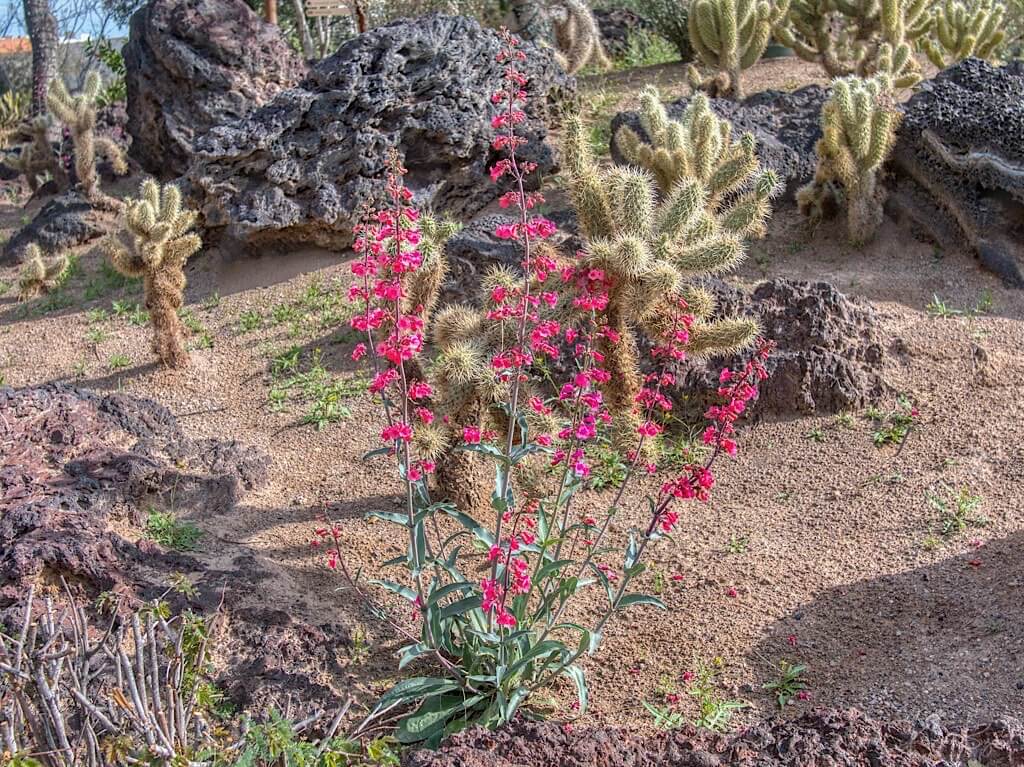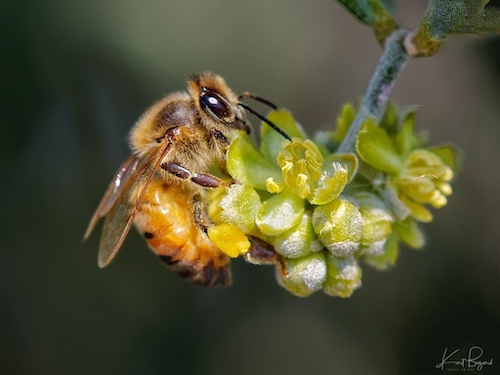
This spring started out as a beautiful time in nature. As I do each year, I decided to focus on the flowers that seem to be everywhere in the spring and in particular on desert flowers at the Ethel M cactus garden. Even though it was rather early, I started at the end of February, hoping to catch the end of winter flowers and the very beginning of the spring flowers. Things were going along very nicely with lots of new flowers each week until the onset of the COVID–19 virus in the beginning of March. As a result of precautions taken against the virus, the garden was closed and I decided to present what I have already photographed. There were many butterflies and bees, I have included them when I could. Despite the tragic nature of this viral outbreak, spring flowers are still beautiful and I thought they might strike a cheerful note in a sea of gloomy news.
Jojoba
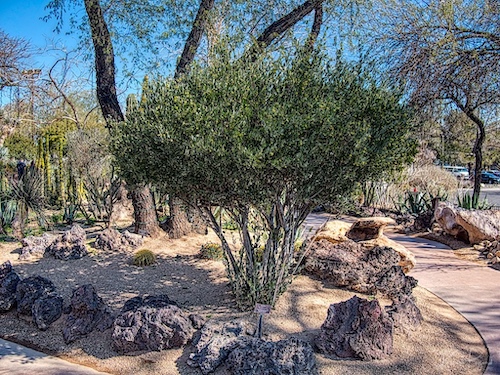
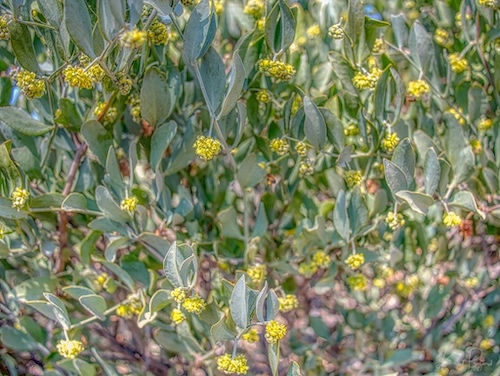
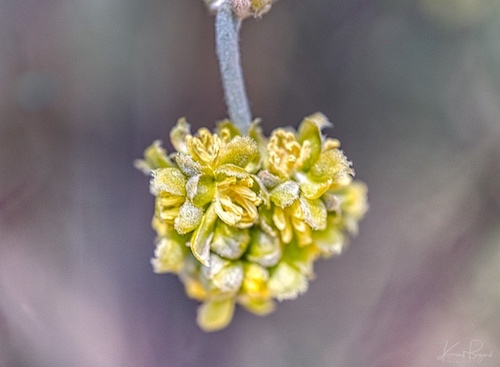
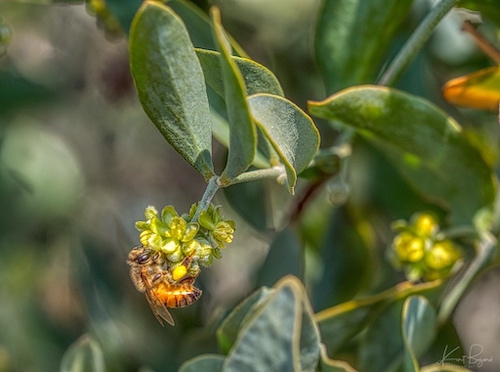
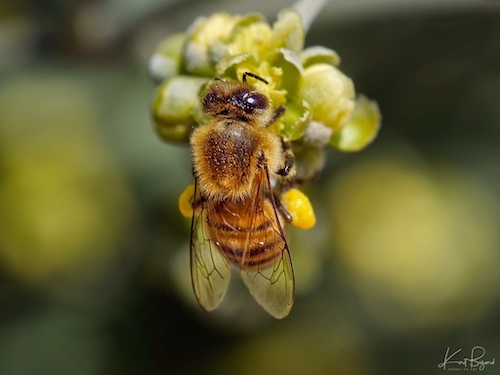
Jojoba known as goat nut, deer nut, pignut, wild hazel, quinine nut, coffeeberry, and gray box bush, is native to the Southwestern United States. The plant is a native shrub of the Sonoran Desert, Colorado Desert, Baja California Desert, and California chaparral and woodlands habitats in the Peninsular Ranges and San Jacinto Mountains. It is found in southern California, Arizona, and Utah (U.S.), and Baja California state (Mexico). Jojoba typically grows to 3.3–6.6 ft (1–2 m) tall, with a broad, dense crown, but there have been reports of plants as tall as 10 feet (3 m). The leaves are opposite, oval in shape, 2–4 centimeters (0.79–1.57 in) long and 1.5–3 centimeters (0.59–1.18 in) broad, thick, waxy, and glaucous gray-green in color. The flowers are small and greenish-yellow, with 5–6 sepals and no petals. The plant typically blooms from March to May and is a real hit with the bees.
Sugar Sumac
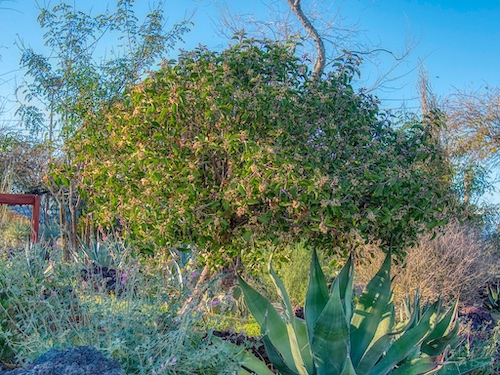
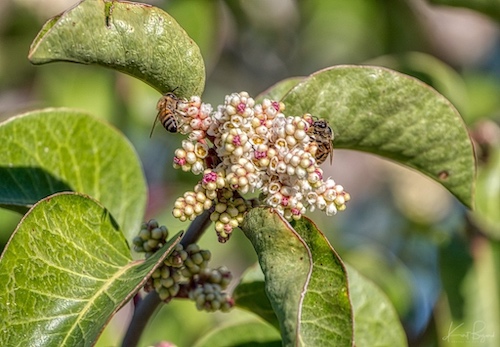
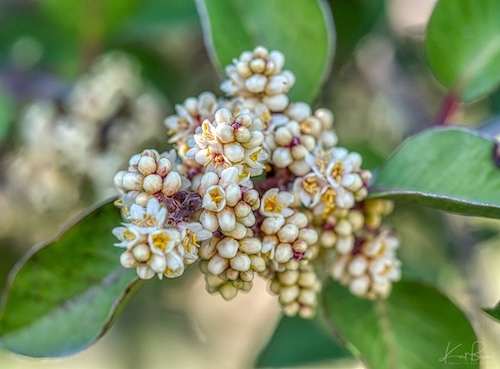
Rhus ovata, also known as sugar sumac or sugar bush, is an evergreen shrub to small tree that grows in chaparral in dry canyons and south-facing slopes below 1300 m in Southern California, Arizona and Baja California. The twigs are thick and reddish in color. Its foliage consists of simple, dark green, leathery, ovate leaves that are folded along the midrib.
Lemonade Sumac
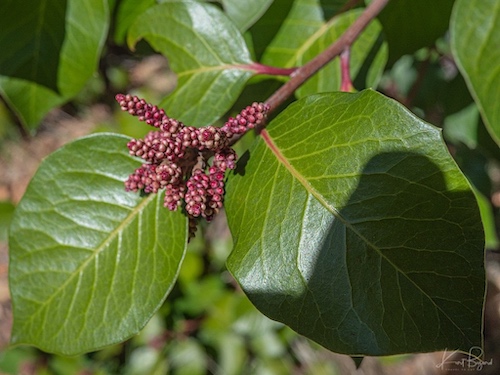
Rhus integrifolia, also known as lemonade sumac, lemonade berry, or lemonadeberry, is a shrub to small tree. It is native to the Transverse and Peninsular Ranges and the South Coast regions of Southern California. This extends from Santa Barbara County and the Channel Islands to San Diego County and extending into north-central Pacific coastal Baja California and its offshore islands such as Cedros Island. Rhus integrifolia leaves are simple (unusual in a genus where most species are trifoliate), alternating, evergreen and leathery, ranging from two to four centimeters wide on reddish twigs; length of leaves is five to seven centimeters. The flowers which appear from February to May are small, clustered closely together, with five green sepals, five white to rosy-pink petals, and five stamens. The small flowers are only six millimeters across. I saw this in Placerita Canyon in California, the subject of the previous post.
African Sumac
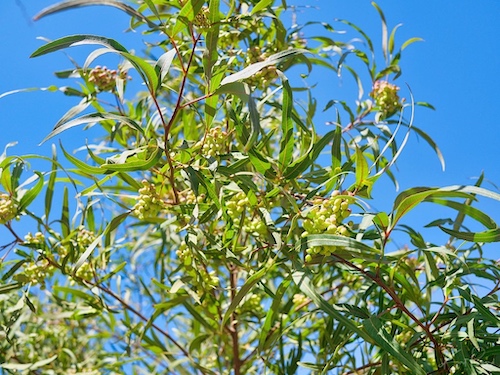
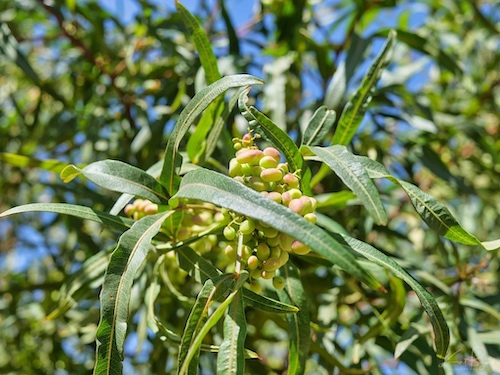
The African sumac is a medium size evergreen tree growing with a low branching habit, 20–30 ft. tall, and a round canopy of equal or greater width. Its fine textured foliage varies from pale green to deep olive-green and has a resinous smell when crushed. Leaves are palmately divided into 3 narrow leaflets, each 3–5 in. long. Inconspicuous flowers are yellow-green and occur in fall to late winter, followed by fruit that are eaten by birds. The fruit begins as green, then reddish and then dried brown. The edible, red or yellow pea-sized berries, were once used in beer-making. In North America, where it is naturalized, it is known as African sumac and willow rhus. The scientific name of this tree is undergoing a change from Rhus to Searsia, however, most nurseries have not followed this change.
Fire Sticks
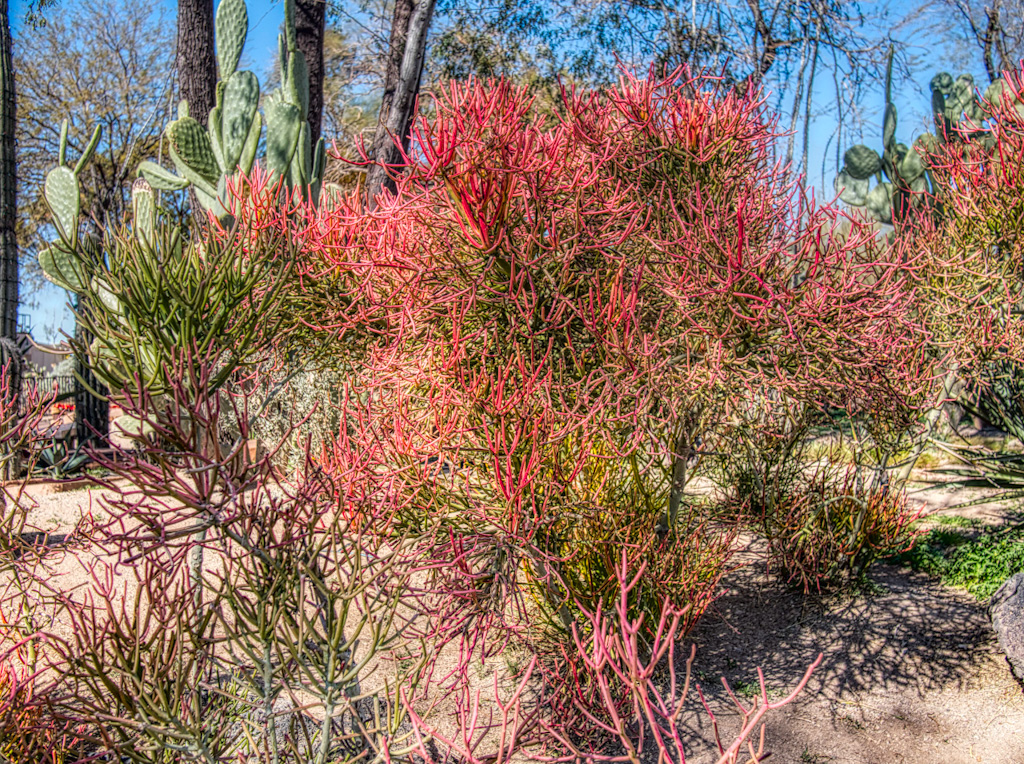
Euphorbia tirucalli (commonly known as aveloz, Indian tree spurge, naked lady, pencil tree, pencil cactus, milk bush) is a tree that grows in semi-arid tropical climates. It has a wide distribution in Africa in black clay soils, being prominently present in northeastern, central and southern Africa. It may also be native in other parts of the continent as well as some surrounding islands and the Arabian peninsula and has been introduced to many other tropical regions, such as Brazil, India, Vietnam, the Philippines and Ghana. It grows in dry areas, especially the savanna, and is often used to feed cattle or as hedging.
Globe Mallow
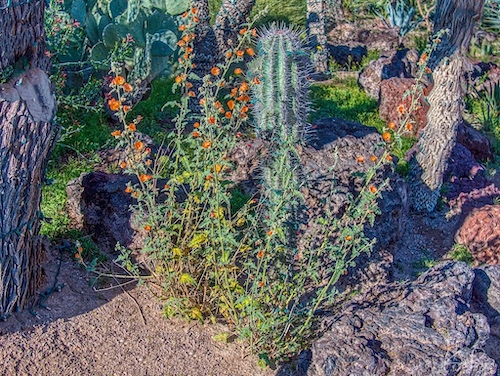
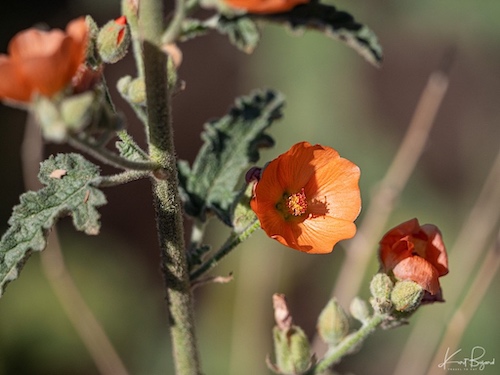
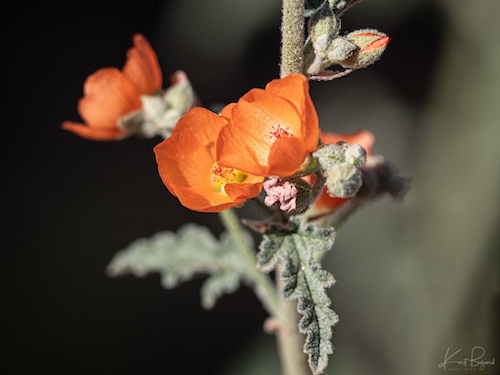
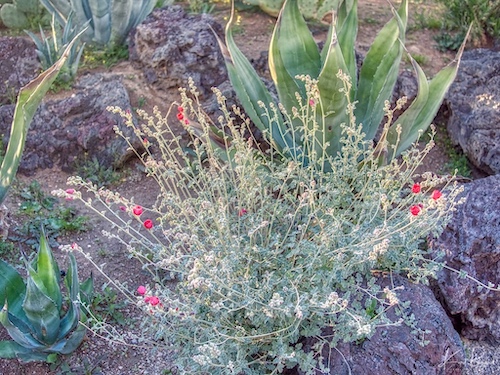
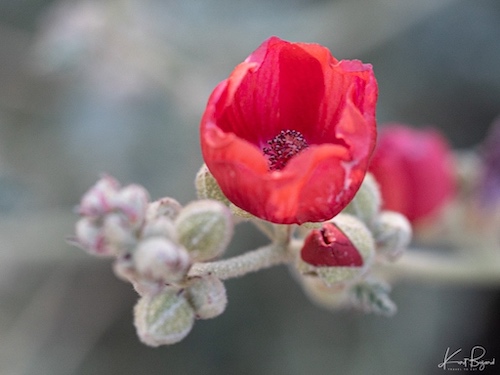
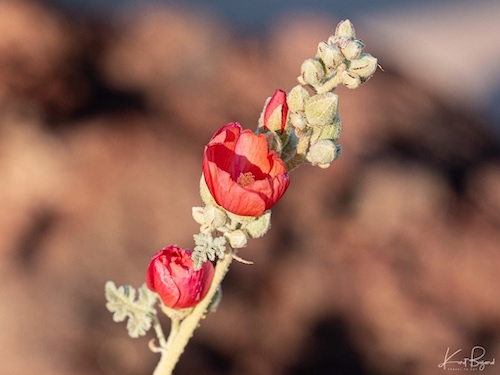
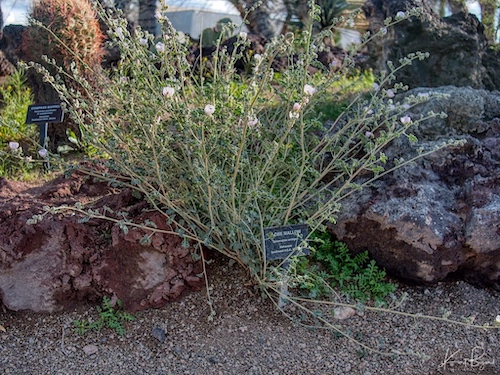
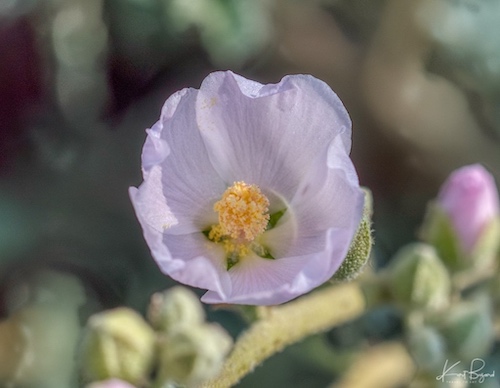
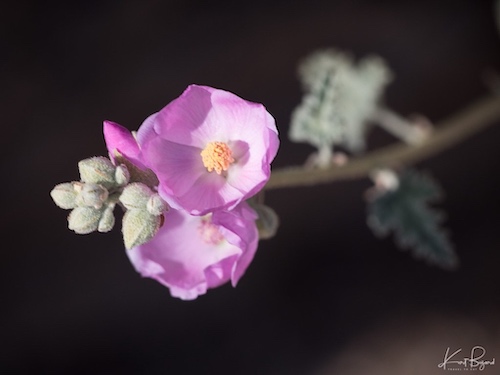
Desert globemallow, generally orange in flower color, occurs from Tucson northward about 70 miles in a variety of pinks, purples, whites, and the occasional scarlet red. The species name is derived from this ambiguity of flower color. The multicolored plants are smaller, the leaves more fine than the rather coarse orange desert globemallow. Beside the beauty, desert tortoises favor globemallow as food. This multi-stemmed mallow is a good source of pollen and nectar for honey bees. Plants are usually 2–4 feet tall with blooms in shades of pink and lavender. These plants are very variable in appearance and hybridize fairly easily.
Chaparral Mallow

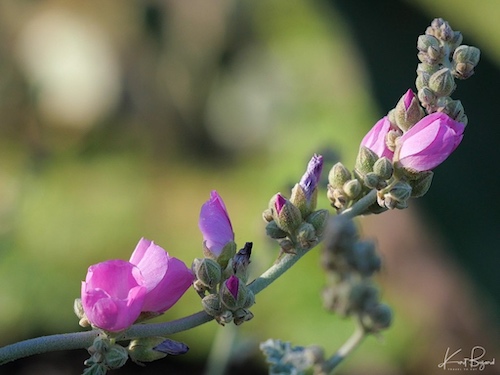
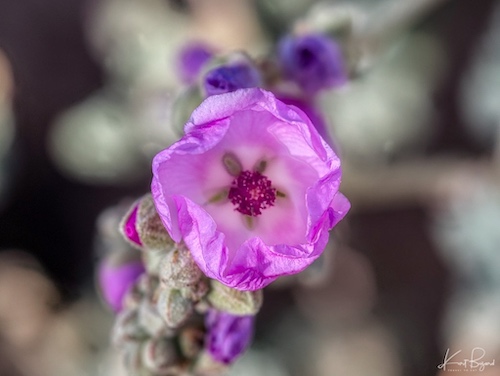
The plant is native to California and northern Baja California, where it is a common member of the chaparral and coastal sage scrub plant communities in many regions, desert chaparral in the Colorado Desert, and other habitats. It is a highly variable plant which is sometimes described as a spectrum of varieties, and which is sometimes hard to differentiate from other Malacothamnus species. In general, this is a shrub with a slender, multibranched stem growing one to five meters in height. It is coated thinly to densely in white or brownish hairs. The leaves are oval or rounded in shape, 2 to 11 centimeters long, and sometimes divided into lobes. Flowers come out in summer and are arranged on an elongated cluster. A shrub can have of thousands of pale pink flowers with petals under a centimeter long.
Brittlebrush
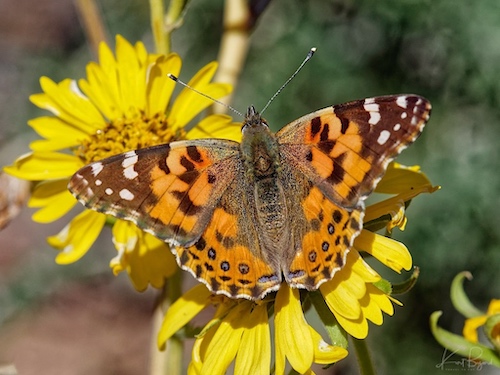
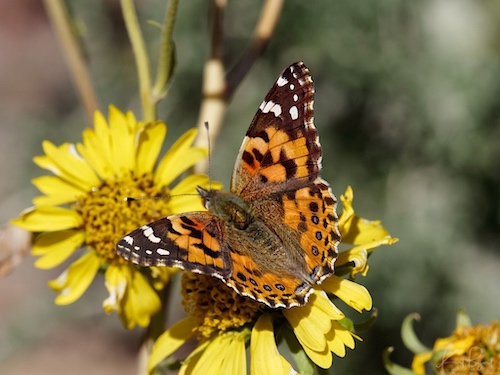
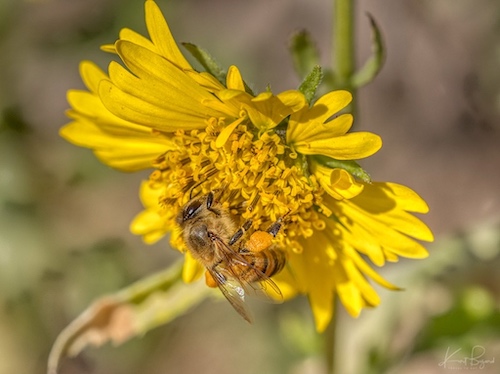
‘Honestly, I only included the Brittlebush (Encelia farinosa) because the butterflies and bees were literally covering the bush. I have written at length about this common silver bush of Mexico and the desert Southwest and will not repeat it here. The West Coast Lady (Vanessa annabella) is one of three North American species of brush-footed butterflies known colloquially as the “painted ladies”. Vanessa annabella occurs throughout much of the western US and southwestern Canada. The other two species are the cosmopolitan Vanessa cardui (painted lady) and the eastern Vanessa virginiensis (American painted lady). The West Coast Lady butterfly larva feeds on plants in the mallow (Malvaceae) detailed above and nettle (Urticaceae) families.
Chuparosa or Beloperone
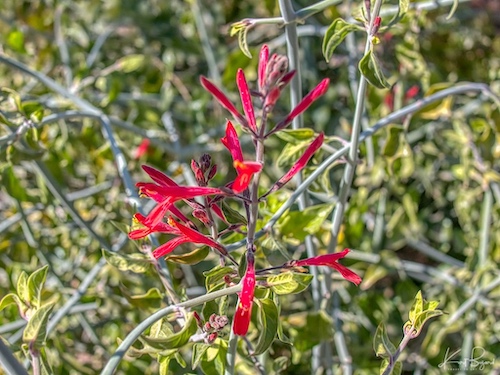
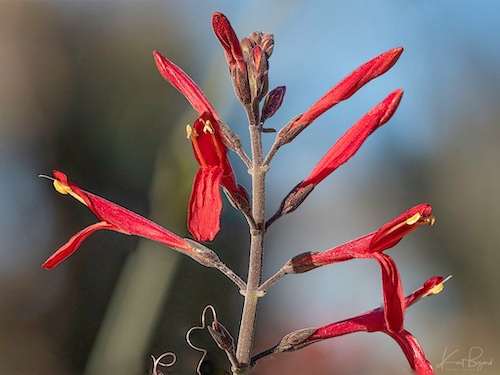
Justicia californica is a species of flowering shrub native to the deserts of southern California, Arizona, and northern Mexico. Its common names include chuparosa (or chiparosa, both colloquial Spanish terms for “hummingbird”), hummingbird bush, and beloperone. It is one of the northernmost distributed species of the mostly tropical genus Justicia. This is a low bush which grows in dry, hot regions in the sand or rocky terrain of the desert floor. For a short time it bears succulent leaves. It loses its leaves and then produces plentiful tubular flowers, usually in shades of bright to deep red, or sometimes yellow. Each long flower has a wide lower lip that falls open to reveal the inside of the blossom. Hummingbirds visit the bush to feed on the nectar. Other birds eat the sugar-rich flower centers.
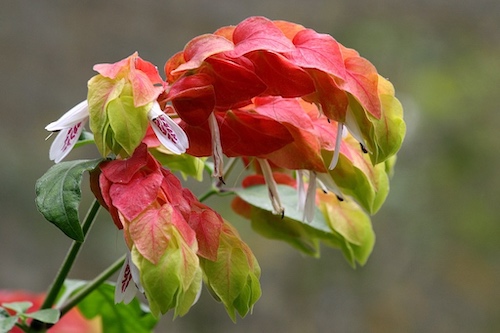
Justicia is a genus of flowering plants in the family Acanthaceae. It is the largest genus within the family, encompassing around 700 species with hundreds more as yet unresolved. They are native to tropical to warm temperate regions of the Americas, India and Africa. The genus serves as host to many butterfly species, such as Anartia fatima. Common names include water-willow and shrimp plant, the latter from the inflorescences, which resemble a shrimp in some species. The generic name honors Scottish horticulturist James Justice (1698–1763).
Emu
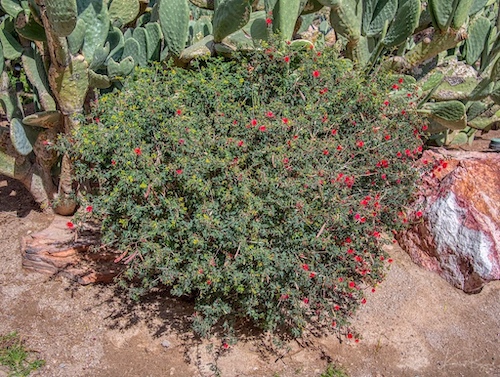
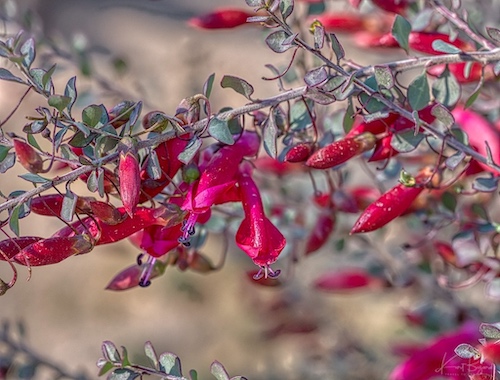
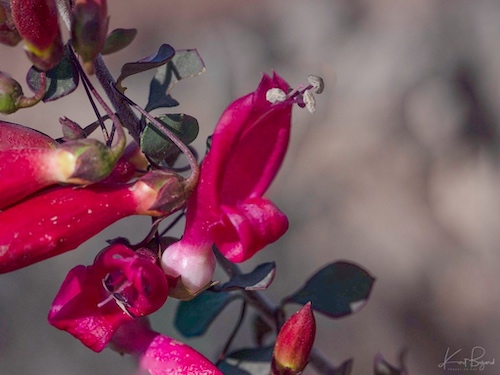
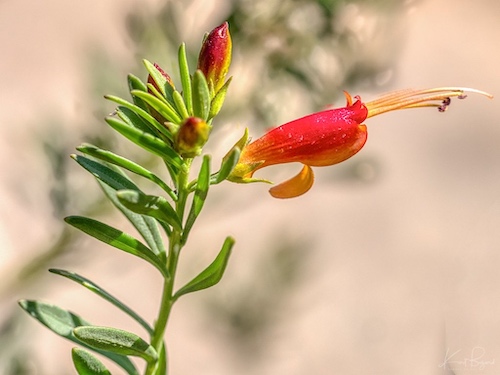
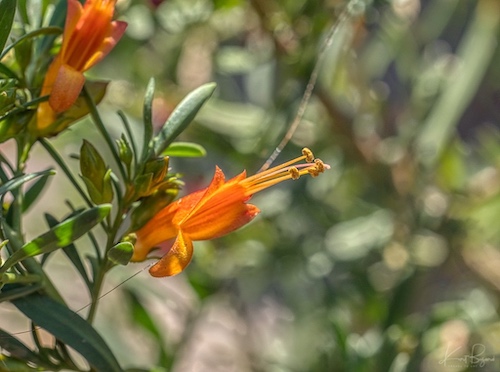
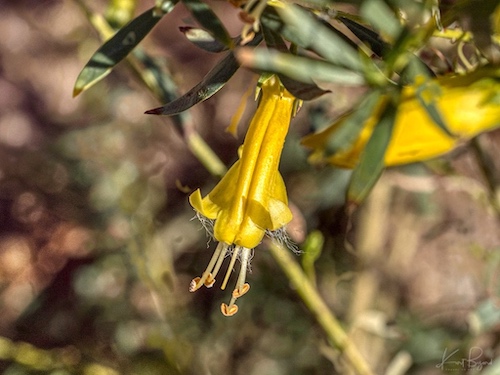
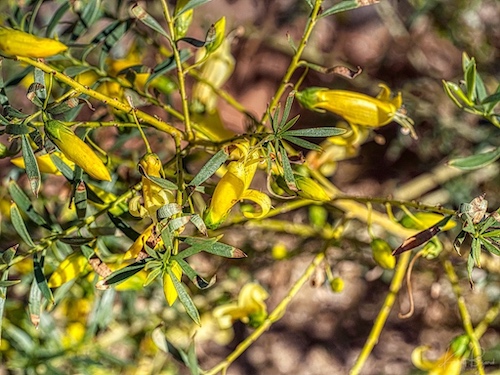
Emu Bush (Eremophila maculata) is a medium-sized shrub with small, round green leaves and a dense, symmetrical growth habit. Native to Australia, this tough, evergreen shrub is becoming popular here in the desert southwest where it is valued for its low water requirements and its long winter bloom period. It is tolerant of heat, alkaline soils and drought. It grows to about 5 feet tall with an equal or greater width. From mid-winter to spring emu bush is covered with an abundance of tubular, rosy red flowers that grow along the tips of its branches and attract hummingbirds. Flowering starts in January, reaches its peak in February and tapers off in March. The flower color often varies even within a single population and may be pink, mauve, red, orange or yellow, often spotted on the inside. Eremophila is a genus of more than 260 species of plants in the figwort family, Scrophulariaceae all of which are endemic to mainland Australia. Eremophilas are widespread in the arid areas of Australia, especially Western Australia and range in size from low-growing shrubs to small trees. Again, really popular in Las Vegas landscapes.
Breath of Heaven
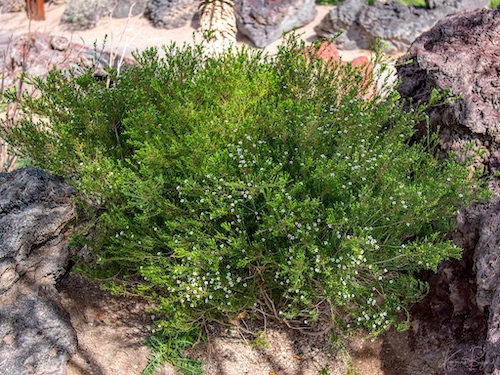
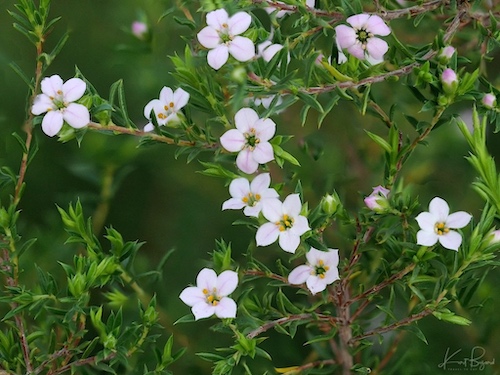
Coleonema pulchellum, commonly known as confetti bush, buchu, diosma or breath of heaven, is a shrub which is endemic to South Africa. It grows to about 3 feet (0.8 and 1 m) high. Single pink flowers to about 8 mm (0.31 in) in diameter appear between May and October in the species native range.Bushy, finely textured shrub of the citrus family grows to about 3 feet high and wide. Stems are slender, and the tiny, narrow, bright green leaves give off a spicy, sweet scent when crushed. Small pink star shaped flowers dot the plants in winter and spring.
Parry’s Beardtongue
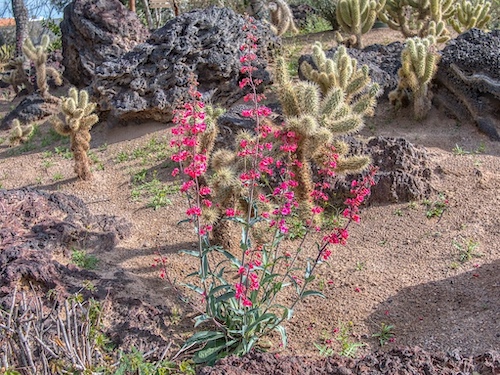
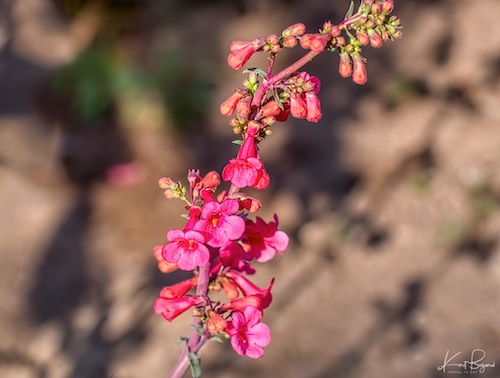
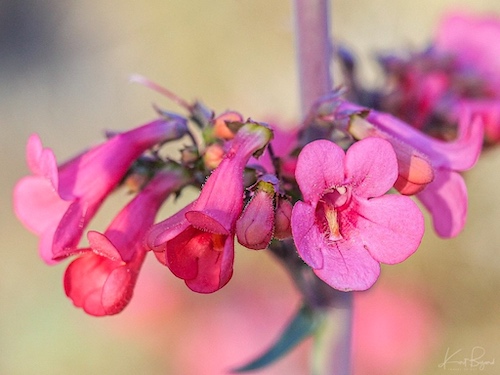
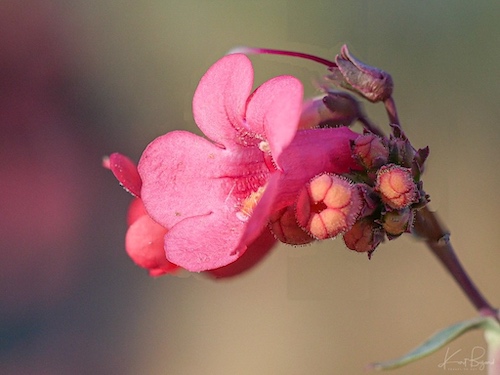
Penstemon parryi, the Parry’s penstemon, Parry’s beardtongue or desert penstemon, is a wildflower native to the Sonoran Desert of Southern Arizona and northern Mexico. It is a perennial that blooms in March and April. In the wild, plants flower in their second year. In cultivation, flowering is often achieved in the first year if seed is planted in the autumn. In person these are just gorgeous, next year I am planting these in my garden.
Baby Sage
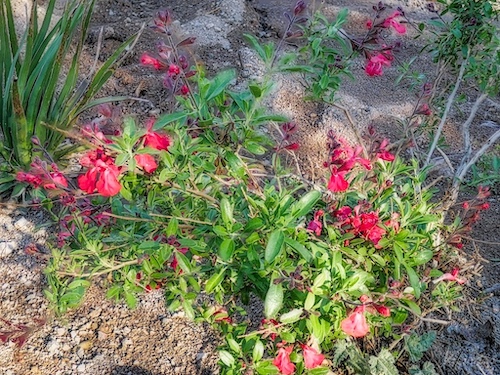
Salvia microphylla, the baby sage, Graham’s sage, or blackcurrant sage, is an evergreen shrub found in the wild in southeastern Arizona and the mountains of eastern, western, and southern Mexico. It is a very complex species which easily hybridizes, resulting in numerous hybrids and cultivars brought into horticulture since the 1990s. The specific epithet microphylla, from the Greek, means “small leaved”. In Mexico, it is called “mirto de montes,” or “myrtle of the mountains.”
Red Yucca
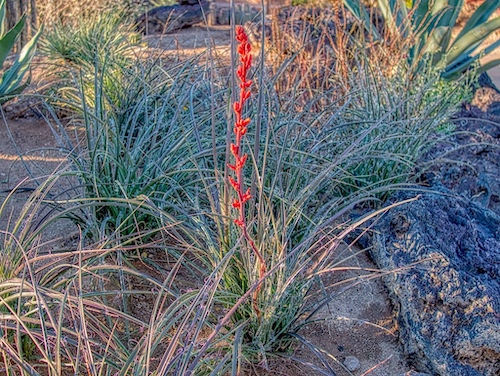
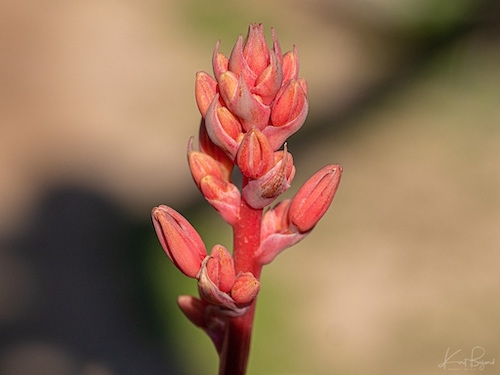
Hesperaloe parviflora, also known as red yucca, hummingbird yucca, redflower false yucca and samandoque, is a plant that is native to Chihuahuan desert of west Texas east and south into central and south Texas and northeastern Mexico around Coahuila. Not a yucca, this member of the Century-Plant family produces soft, yucca-like, evergreen leaves, 2–3 ft. in length, crowded on the perennial’s short, woody base. The flower stalk rises 5 ft. and bears showy, coral-colored, tubular flowers occur on arching, wand-like, pink stems. Sadly, I only have photos of the beautiful flower buds. Leaves are plum-colored in winter; blue-green other times.
Soap Aloe
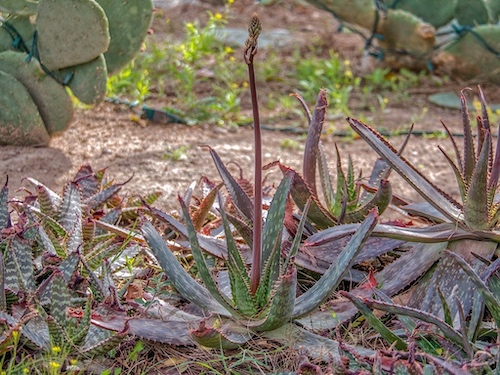
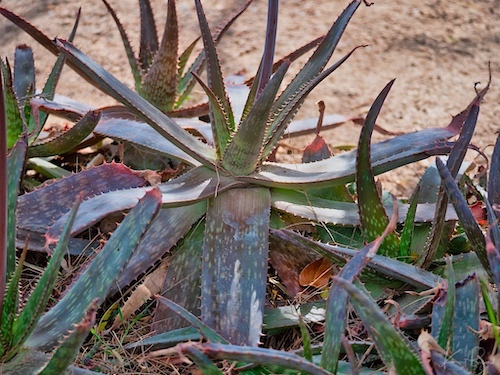
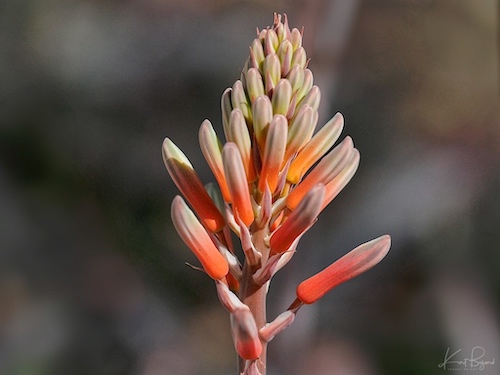
Aloe maculata commonly known as the soap aloe or zebra aloe) is a Southern African species of aloe. Local people in South Africa know it informally as the “Bontaalwyn” in Afrikaans, or “Lekhala” in the Sesotho language. It is a very variable species and hybridizes easily with other similar aloes, sometimes making it difficult to identify. The leaves range in colour from red to green, but always have distinctive “H-shaped” spots. The flowers are similarly variable in color, ranging from bright red to yellow, but are always bunched in a distinctively flat-topped raceme. The inflorescence is borne on the top of a tall, multi-branched stalk and the seeds are reputedly poisonous.
Ruellia
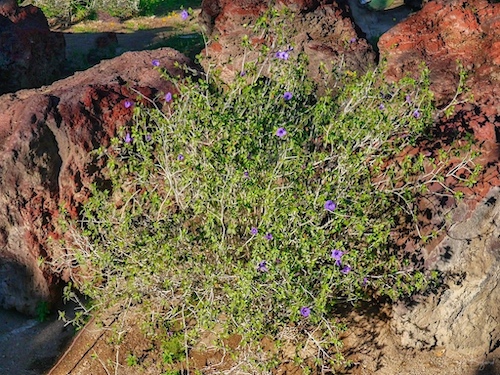
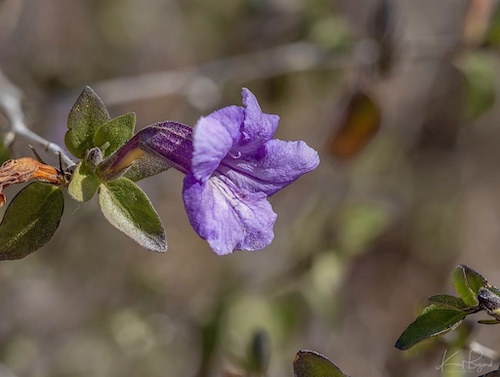
Native to Baja California. this evergreen shrub has a naturally rounded form, with white-grey stems, small glossy green leaves, and deep blue/purple flowers. Peak blooming occurs from spring to early summer, with sporadic flowering throughout the year. This small, but tough little shrub is the perfect addition to the classic native Sonoran Desert landscape. It will survive with little irrigation, but will blossom profusely throughout the warm months with more moisture. The purple flowers, reminiscent of petunias, attract hummingbirds and occasional butterflies.
Trumpet Creeper
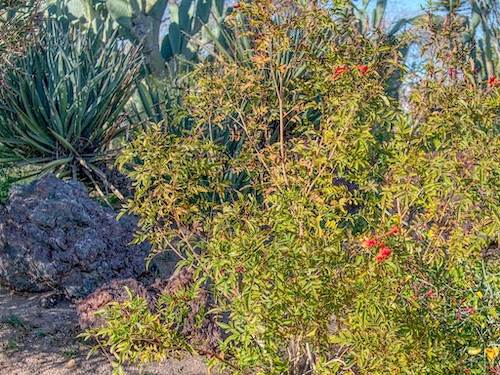
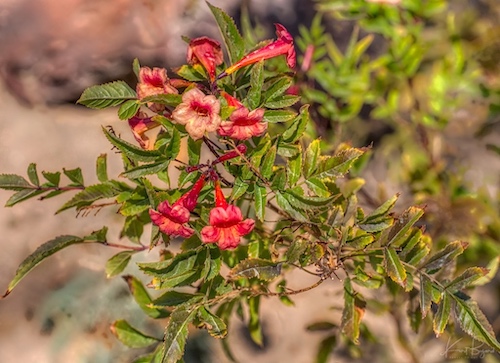
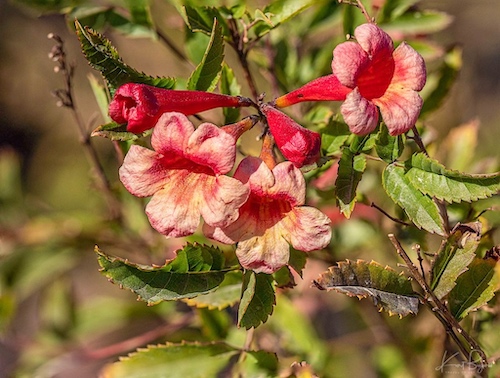
A vigorous North American native, Trumpet Creeper is a self-clinging woody climber with particularly showy trumpet-shaped flowers. Appearing throughout the summer, these tubular flowers are borne in clusters at the ends of the branches and provide a long-lasting and spectacular floral display. Hummingbirds and butterflies love them and never fail visiting them. The blooms are followed by attractive bean-like seedpods. The foliage of pinnate, shiny, dark green leaves above and dull green below, is deciduous.
Gopher Surge
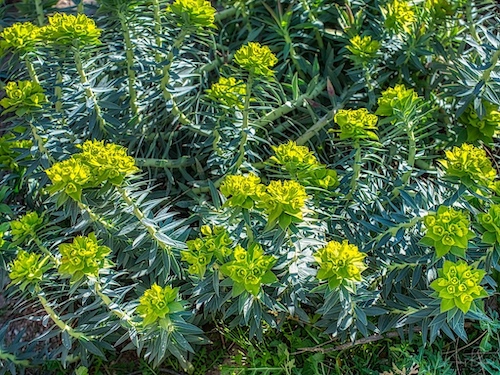
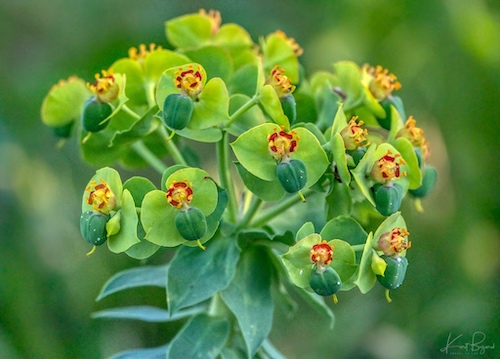
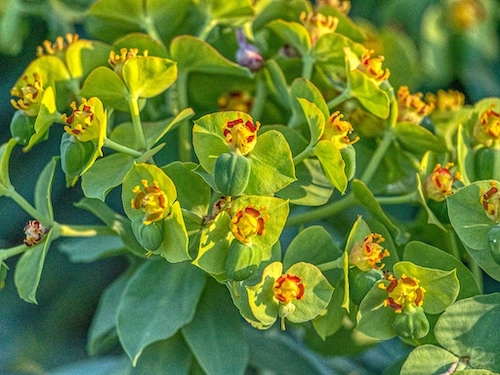
Euphorbia rigida is native to the Mediterranean region (southern Europe to southwest Asia). It is a shrubby, evergreen, perennial spurge that typically grows in a clump to 2’ tall and 3’ wide on upright ascending stems. Fleshy, succulent-like, pointed-at-the-tip, lanceolate, steely blue-green leaves (to 1 1/2’ long) are arranged in close spirals around the stems. Non-showy greenish true flowers are subtended by showy chartreuse-yellow bracts. Flowers bloom in domed heads at the stem tips in spring (April-June). When cut or bruised, the stems exude a milky sap which may be irritating to the skin and eyes. This is an extremely popular landscaping plant in Las Vegas.
Ferocactus latispinus
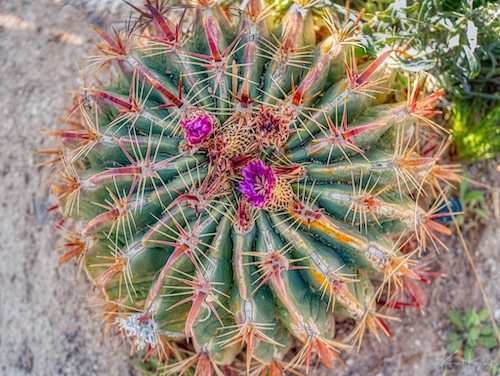
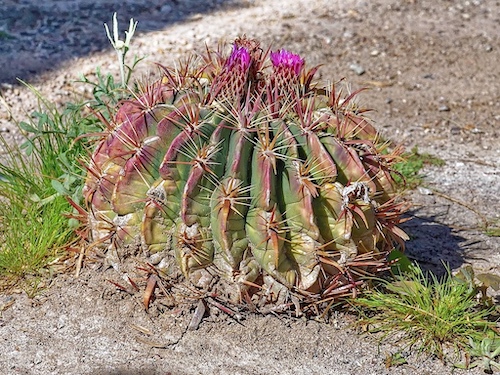
This cactus is originally from Mexico. Ferocactus latispinus grows as a single globular light green cactus reaching the dimensions of 30 cm (12 in) in height and 40 cm (16 in) across, with 21 acute ribs. Its spines range from reddish to white in colour and are flattened and reach 4 or 5 cm long. Flowering is in late autumn or early winter. The funnel-shaped flowers are purplish or yellowish and reach 4 cm long, and are followed by oval-shaped scaled fruit which reach 2.5 cm (1 in) long. The subspecies spiralis is restricted to the southern parts of Oaxaca and Puebla in Mexico with 5–7 radial spines. With a bit more time in the spring, I had hoped to catch more blooming cactus but the Coronavirus intervened.
Fairy Duster
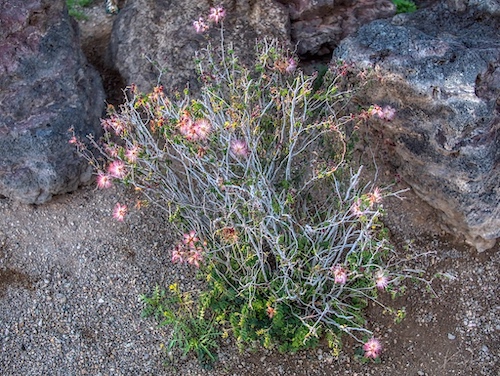
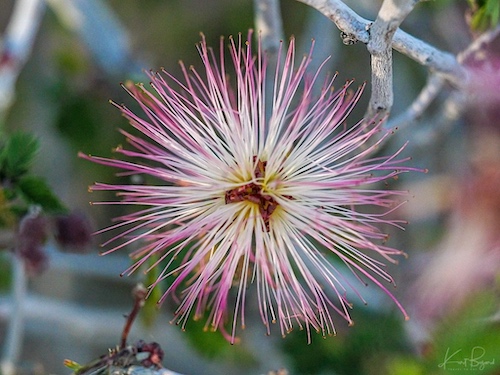
Calliandra eriophylla, commonly known as fairy duster, is a low spreading shrub which is native to deserts and arid grasslands in California, Arizona, New Mexico and Texas and Mexico. The flowers, which appear between late winter and late spring, have dense clusters of pale to deep pink stamens and are about 5 cm (2 in) wide. The shrub is usually between 20 and 50 cm (8 and 20 in) high and has bipinnate leaves. It is useful natural remedy against many nervous system imbalances. The Calliandra genus has over 250 species, with only three being native to the southwest. The genus name, Calliandra, means “beautiful-stamens”. The species name, eriophylla is Greek for “wooly leaf”.
Baja Fairy Duster

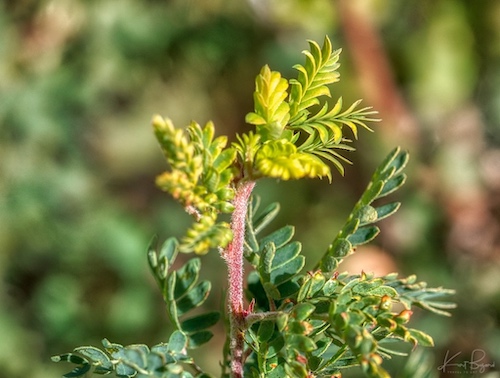
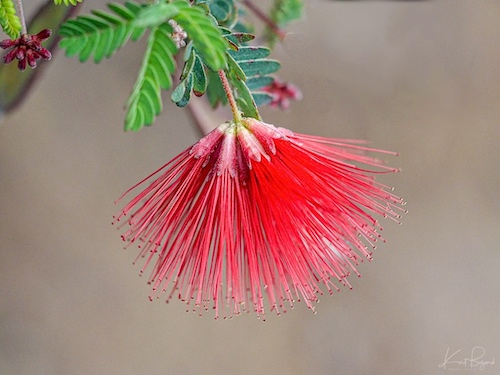
Calliandra californica (Baja fairy duster), is an evergreen, woody shrub which is native to Baja California, Mexico. In Spanish, the plant is also known vernacularly as tabardillo, zapotillo or chuparosa. The flowers, which appear in early summer, have clusters of red stamens. The shrub is usually between 0.6 and 1.8 metres in height and has bipinnate leaves. The leaves have been described as “fern-like”. Leaves close at night time. Calliandra californica attracts both bees and hummingbirds. I personally love these tiny red flowers. All of these Calliandra plants have similar leaves, like mimosa or sensitive plants.
Calliandra
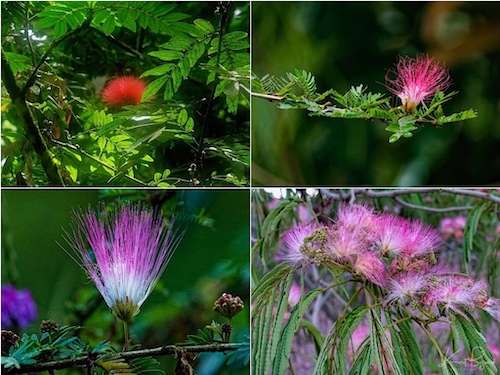
I thought I would mention that Calliandra is a genus of flowering plants with similar blooms and leaves. It contains about 140 species that are native to tropical and subtropical regions of the Americas. The flowers are have numerous long slender stamens which give rise to the common names powder-puff, powder puff plant, and fairy duster. Of interest is the Persian Silk Tree or Mimosa Tree (Albizia julibrissin) which is neither a silk tree, calliandra or mimosa but has similar flowers. I just find the flowers of Calliandra unusual and beautiful.
Cascalote
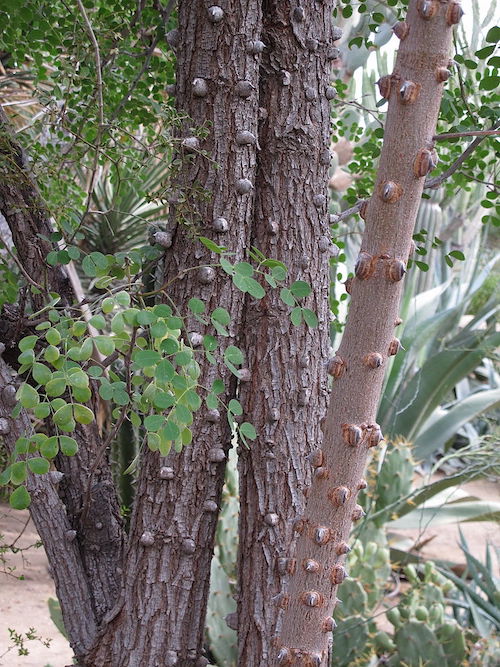
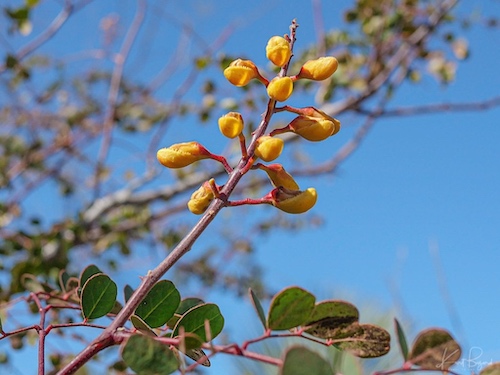
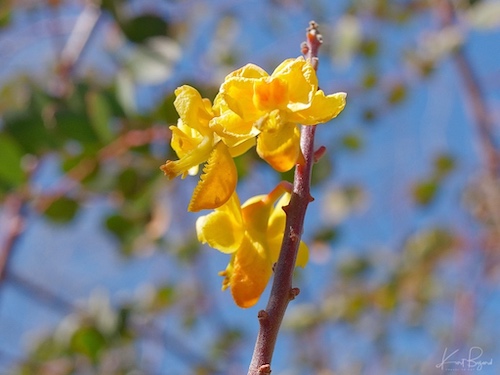
Cascalote is a colorful winter-flowering accent or background plant for southwestern landscapes. It’s blooms attract hummingbirds. Cascalote does have stout, protruding stem thorns that make it a plant that should not be used close to pedestrian access ways.
Texas Mescalbean
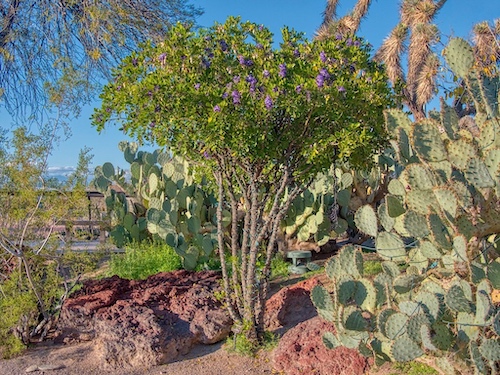
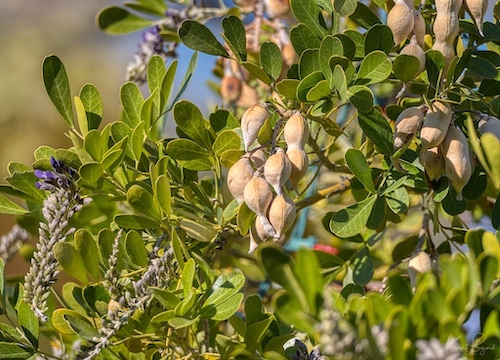
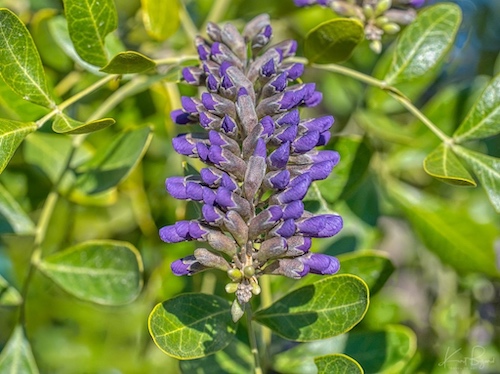
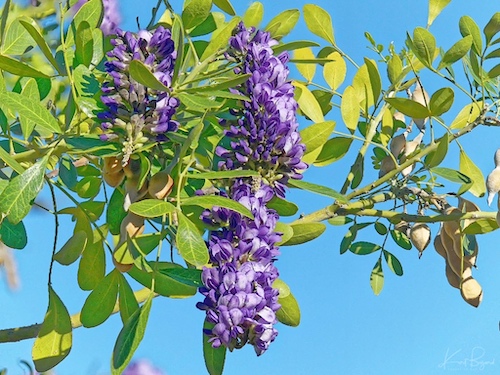
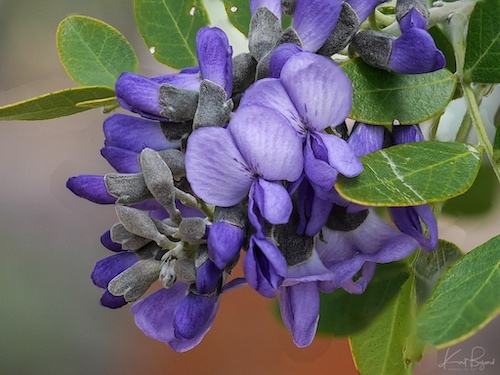
Dermatophyllum is a genus of three or four species of shrubs and small trees in the subfamily Faboideae of the pea family, Fabaceae. The genus is native to southwestern North America from western Texas to New Mexico and Arizona in the United States, and south through Chihuahua, Coahuila and Nuevo León in northern Mexico. Members of the genus are commonly known as mescalbean, mescal bean or frijolito. Mescal bean is a woody evergreen shrub less than 10 feet tall or, in limited areas, a tree growing up to 35 feet tall. It is a member of the legume family. The leaves are alternate with seven to 13 leaflets. The flowers are purple and strongly fragrant, they remind me of wisteria. The fruit is a large, hard, woody, jointed, 1–8 seeded legume pod. The seeds are bright red, hard-surfaced and about 0.5 inch long.
Desert Senna/Cassia
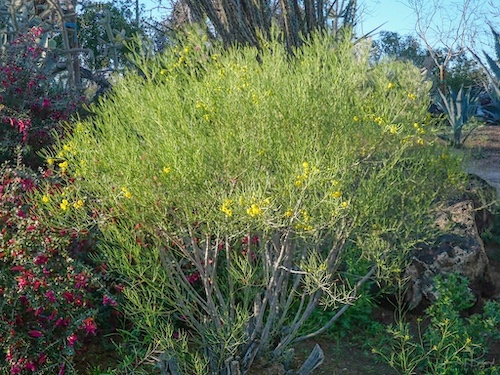
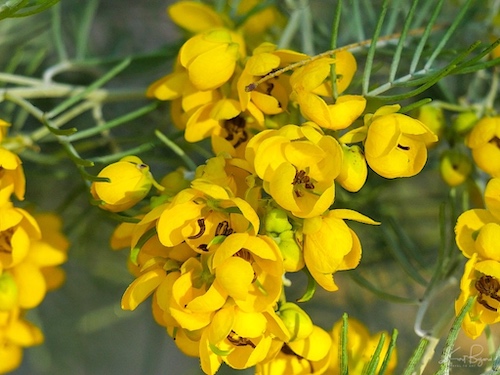
The Senna genus has recently been moved to the Fabaceae family, earlier having been placed in Leguminosae or Caesalpiniaceae. Previously the genus was also known as Cassia, a genus that is no longer regarded as occurring naturally in Australia. The species name has also changed from Cassia nemophila to Senna artemisioides. If that were not enough, Senna artemisioides subsp. filifolia is also known as Desert Senna/Cassia, Punty Bush or Fine-Leaf Desert Cassia. Native to Australia, this rounded evergreen shrub has narrow bright green leaves and produces masses of bright yellow pea-like flowers in early spring. The flowers are followed by green, then brown papery seedpods that persist on the plant.
Parralena
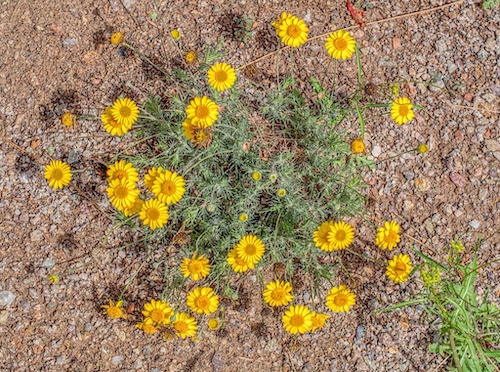
This common low plant frequently grows near Creosote Bush (Larrea tridentata) and Snakeweed (Gutierrezia sarothrae) or among piñon, juniper, and Snakeweed. The closely related Prickly Fetid Marigold (T. acerosa) is more woody and prickly, with flower heads that sit among undivided leaves. Both species were once included in the larger genus Dyssodia. Thymophylla is one of dozens of western North American genera that also have species in southern South America but have no species in the great distance between these two regions. This range distribution probably requires the long-distance dispersal of seeds, perhaps by migratory birds.
Wild Mustard
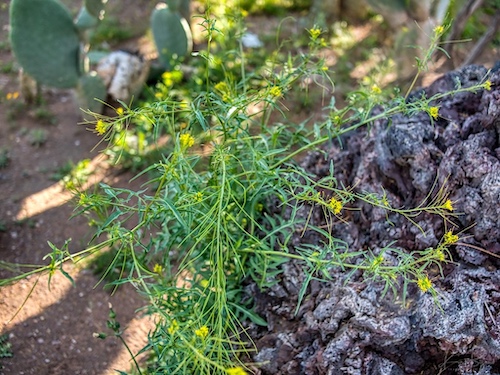

London rocket is considered native to Europe and perhaps into the Middle East. It has since naturalized itself throughout the world (all continents except for Antartica), including all over the Southwest and Northeast US, into the eastern Great Lakes region, and Florida. In the desert Southwest it’s a winter annual. In most other locals in the US it’s a summer annual. Like several edible members of the Brassicaceae, the raw leaves contain a relative abundance of Vitamin C (68mg/100g). The fresh leaves also contain calcium, potassium, magnesium, iron, and zinc. Simply pick them off of young plants (not yet flowering) and bring into the kitchen. London Rocket is an aggressive weed in Nevada and elsewhere, but quickly dies out when the hot temperatures arrive. The plant responds well after fire, and its abundance and rapid growth following the Great Fire of London in the 1600’s resulted in its common name, London Rockets.
As always I hope you enjoyed the post, stay safe and leave a comment if you like.

